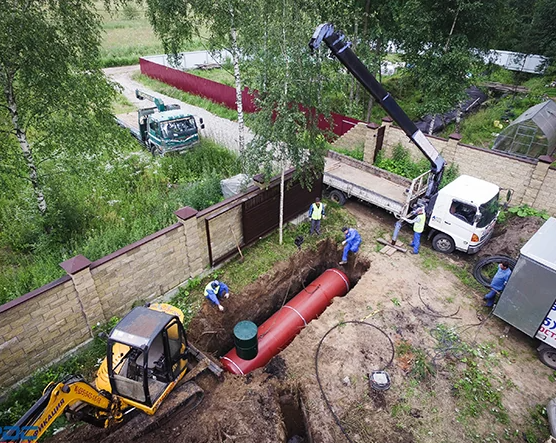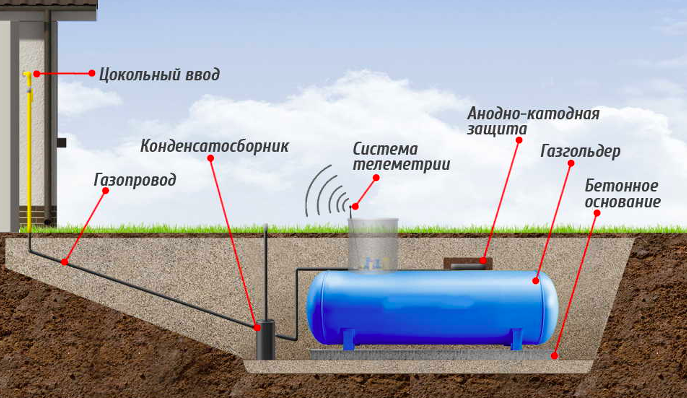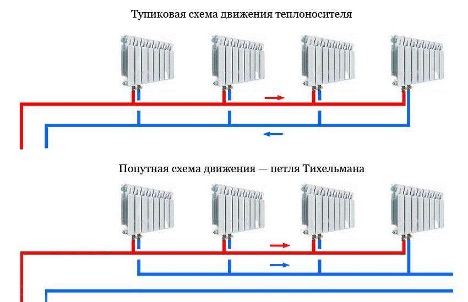Gas holder for a private home: what is it, pros and cons, volume
If we say in simple words what a gas holder is for a private home, it can be defined as a metal container with sensors and an outlet pipe through which liquefied gas enters the house. The capacity is designed for several thousand liters, so this volume is enough even for heating and hot water supply of large rooms for 4-12 months. A description of the device, the cost of an approximate installation, as well as pros and cons can be found below.
The content of the article
Design, volume of the gas tank and composition of the gas mixture.
When studying the gas tank, the pros and cons of the unit, you should first become familiar with the features of the device. Essentially, this is a large metal container with a capacity of several thousand liters, which is installed outdoors. The tank is used to store gas, with the fuel being pressurized and liquefied. Thanks to this, the supply lasts for a long time - at least for several months.
The most important characteristic of a container is its volume, which determines how often the gas tank is refilled. Since the depth and width are usually standard, they are determined by the tank length parameter:
- 5 m – 4850 l of gas;
- 7 m – 6400 l;
- 10 m – 9200 l.

There is a supply pipe connected to the tank, which goes into the house. Therefore, the gas holder is used for heating, as well as hot water supply, not only in the cold season, but also in the warm season. The unit emits several sensors that automatically monitor pressure and, in case of violation, immediately shut off the fuel supply to avoid emergency situations.
It was the volume of the gas tank that determined its main advantage. Even if you install a small tank 5 m long, this is enough to accommodate almost 5000 liters of liquefied gas. On average, the need to meet the needs of a private home requires this for several months. Refilling is carried out from 1 to 3 times a year, which is much more profitable compared to conventional gas cylinders.

Composition of the gas mixture and heating costs
In most cases, the tank is filled with butane or propan. Moreover, the composition of the mixture is determined by the season:
- summer option - butane, which begins to freeze faster compared to propane;
- winter mixture - propane: it is more expensive, but it provides effective heating even in winter frosts.
Theoretically, the tank can be filled with methane, but its ability to liquefy is much lower. Therefore, this option will be more expensive, and in practice it is used very rarely.
If you choose the composition of the gas mixture correctly, The cost of heating with a gas holder per month is significantly reduced. It is determined by the area of the house and the volume of consumption. If we take the average values as a basis, we get the following picture:
- area 100 m2 – monthly consumption is about 4000 rubles;
- 150-200 m2 – 5500-7000 rub.;
- 300-350 m2 – 11,000 rub.;
- 450 m2 – 14,000 rub.
Thus, even for a fairly large house with an area of 150-200 m2, the payment per year will be about 72-80 thousand rubles. Moreover, we are talking about full provision of not only heating, but also hot water supply.When compared with gas cylinders, electricity, coal, firewood and other types of fuel, this method looks more cost-effective. Therefore, there is no need to doubt whether it is profitable or not to install a gas tank.
Installation Requirements
Having figured out what kind of gas is in the gas tank, you must also familiarize yourself with the requirements for installing the system:
- the distance from the container to a residential building (both your own and a neighbor’s) must be at least 10 m;
- from outbuildings - from 2 m;
- the surface should be flat and the area should be open (no trees, vertical structures, bushes);
- access to the device must be unobstructed both for periodic refueling and for repair work;
- if the installation is above ground, it is necessary to insulate the container, as well as finishing with protective materials so that the surface does not overheat in the sun;
- the tank is placed in a pit, the depth of which should be from 1.9 m, and the width should be approximately the same - from 2 m;
- the container is placed strictly parallel to the surface;
- it is placed on the slab, secured directly to the supports with anchor bolts or using cables;
- the valve must be located above the groundwater level to prevent moisture from entering.

Pros and cons of a gas tank
Even if you choose the minimum volume of a gas tank for a country house for 4850 liters of gas, you can take advantage of all the advantages of such a unit:
- Full autonomy - having your own tank allows you not to depend on the central gas pipeline. This is especially true for villages, since the level of gasification in Russia does not yet exceed 60% and can vary greatly depending on the specific region.
- The automation perfectly controls the flow level, pressure and other parameters, which virtually eliminates emergency situations (provided that the equipment is properly refueled and timely maintained).
- The consumption of a gas holder for a private home is small, since the fuel is liquefied. Therefore, it is a more cost-effective option compared to other energy sources, such as diesel or electricity.
- The device is durable and lasts about 25-50 years.
- The capacity of a gas holder for a private home is large, so it only needs to be refilled 1-3 times a year.
- Gas itself is an environmentally friendly fuel, the combustion of which produces only water and carbon dioxide, which are safe for health and the environment.
- There is no noise, foreign smell or soot. Therefore, maintaining the system is quite simple.

But there are also disadvantages:
- Installation is very expensive (on average 150-250 thousand rubles) and is carried out only by specialists, whose services also need to be paid. When assessing costs, you should definitely check the cost of annual maintenance.
- Not all areas are suitable for the numerous requirements for installing a tank.
- If you place the container on the ground, you will have to equip it with heating, for example, electric heating elements, which also increases costs.
Thus, the installation costs of the unit are quite high. But if you consider that it will be installed for several decades, the investment will definitely pay off over time. In addition, if gasification in rural areas is not planned in the foreseeable future, it is your own gas tank that will be the best way to solve the problem.





